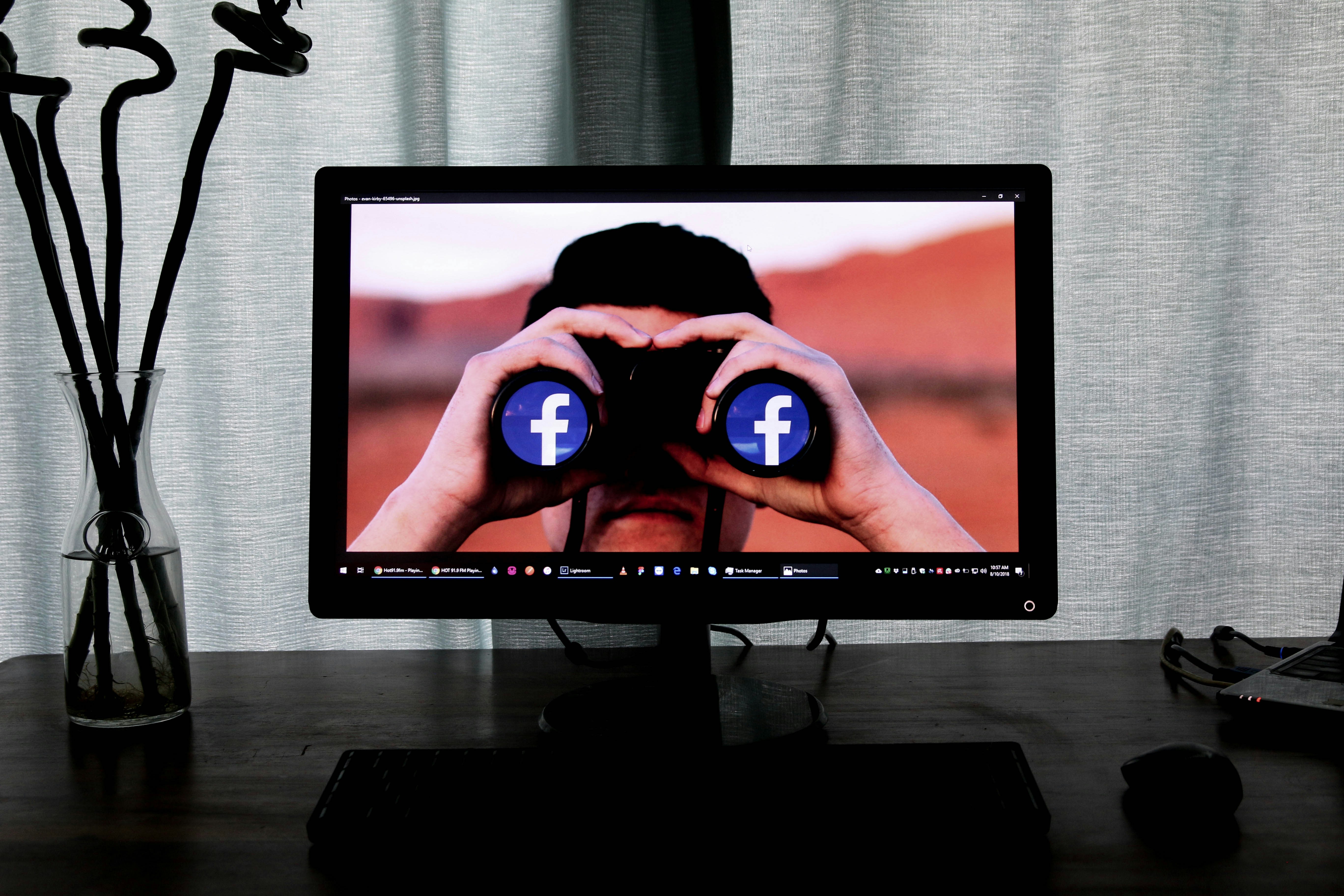The Importance of Responsible Photo Sharing on Social Media
Understanding the impact of sharing photos on social media
Social media platforms have become an integral part of our lives, allowing us to connect with friends and family, share experiences, and express ourselves creatively. Among the various types of content we share, photos hold a special place as they can capture joyful moments, milestones, and memories. However, it is essential to understand the impact of sharing photos on social media and the potential consequences it may have.
Protecting your own privacy
When sharing photos on social media, it’s important to be mindful of your own privacy. Ensure that you review and adjust your privacy settings to control who can see your photos. Consider limiting your audience to close friends and family, or even opting for a private account. Additionally, be cautious about sharing sensitive or personal information in the caption or description of your photos, as this could potentially be accessed or misused by others.
Respecting the privacy of others
Responsible photo sharing also involves respecting the privacy of others. Always obtain permission before posting photos that include identifiable individuals other than yourself. Ensure that you have their consent to share and tag them in the photos, as not everyone may be comfortable with being publicly associated with certain moments or events. Remember, it’s important to respect their boundaries and privacy choices.
By practicing responsible photo sharing on social media, you can create an online environment that is respectful, safe, and enjoyable for everyone.
This image is property of images.unsplash.com.
## Guidelines for Image Privacy
Consider adjusting your privacy settings
When sharing photos on social media, it is essential to review and adjust your privacy settings to ensure that your images are only visible to the desired audience. Most platforms offer various options, allowing you to choose who can see your photos – whether it’s just your close friends and family or a broader network of followers. By taking a few minutes to customize these settings, you can regain control over who has access to your personal moments.
Be mindful of location data
Many smartphones and cameras automatically attach location data to your photos, revealing the exact place where they were taken. Before sharing any pictures, consider disabling location services on your device or removing geotags manually. This precautionary step prevents potential privacy breaches and protects your personal information from falling into the wrong hands.
Avoid sharing sensitive or inappropriate images
Responsible photo sharing entails exercising discretion and respect for others. Think twice before posting any sensitive or inappropriate images that could harm someone’s reputation, invade their privacy, or violate social norms. Remember, once an image is shared online, it becomes challenging to control its circulation or retrieval.
Understand the implications of tagging and geotagging
Tagging people in your photos can make it easier for others to find and view them. Be considerate of others’ privacy and only tag individuals who consent to being identified in your posts. Additionally, think twice before using geotags, as it reveals your physical location and can potentially compromise your safety and security.
By following these guidelines, you can confidently share your photos on social media while maintaining a strong sense of privacy and respecting the privacy of others.
This image is property of images.unsplash.com.
## Protecting Your Own Privacy
Review and customize your privacy settings
When it comes to sharing photos on social media, it’s crucial to be in control of your privacy settings. Take some time to review and customize these settings to ensure that only the people you trust can view your photos. Most social media platforms have privacy settings that allow you to determine who can see your posts, including your photos. By adjusting these settings, you can limit the audience and protect your privacy.
Think twice before sharing personal information
Before you hit that ‘post’ button, pause and consider if you are inadvertently sharing any personal information along with your photos. Details like your home address, phone number, or even the name of your workplace may unintentionally be visible in the background of your photos. Be mindful of such information and avoid sharing it online to mitigate the risk of potential privacy breaches.
Consider sharing photos in private groups or with selected individuals
If you want to share photos with a specific group of people or individuals, consider using private groups or direct messaging features provided by social media platforms. These options can offer an added layer of privacy and control over who sees your photos. This approach ensures that your photos are only shared with a select audience, giving you peace of mind and control over your online presence.
Regularly monitor your online presence
It is essential to regularly monitor your online presence to ensure that your privacy is intact. Regularly search for your name, usernames, and any personal information associated with your photos to see what information is available publicly. If you come across any concerning content or photos, take immediate action to remove them or report them to the platform. By monitoring your online presence, you can stay on top of potential privacy issues and take necessary steps to protect yourself.
This image is property of images.unsplash.com.
### Ask for permission before posting photos of others
When it comes to sharing photos on social media, it is important to be respectful of the privacy of others. Before you hit that post button, always make sure to ask for permission from the individuals featured in the photos. Not everyone may be comfortable with their images being shared online, so it’s crucial to respect their feelings and wishes.
Respect the wishes of those who decline to be tagged or included in photos
While some people may agree to have their photos posted, they might not necessarily want to be tagged or identified in them. Always honor their preferences and refrain from tagging them or mentioning their names in the captions or comments. Respecting their choice to maintain a certain level of privacy will enhance trust and strengthen your relationships.
Be cautious when posting group photos with multiple individuals
Group photos can be fantastic mementos of memorable occasions, but they can also present challenges when it comes to image privacy. Before sharing a group photo, take the time to consider if everyone in the picture is comfortable having their image online. If not, it may be better to refrain from posting it altogether or seek consent from each individual featured.
Consider blurring or pixelating faces if necessary
In some situations, it might be necessary to blur or pixelate faces in the photos you share. This can be particularly relevant when posting images from public gatherings or events, where obtaining explicit consent from every person featured might not be feasible. Blurring or pixelating faces can help protect the privacy of those individuals while still allowing you to share the moment.
Photo Sharing Etiquette
Avoid oversharing
When sharing photos on social media, it’s important to strike a balance between sharing meaningful moments and overwhelming your followers with a barrage of unnecessary images. While it’s great to keep friends and family updated, remember that constantly bombarding them with numerous photos might lead to disinterest or even annoyance. Choose quality over quantity and be mindful of the impact your posts may have on others.
Consider the appropriateness of each platform
Different social media platforms cater to different audiences and purposes. Consider the appropriateness of your photos for each platform. For instance, sharing personal family moments may be better suited for Facebook, while professional photography might find a more receptive audience on platforms such as Instagram or Flickr. Tailor your posts to the platform’s style and audience, ensuring that your photos are well-received.
Give credit to photographers and artists
If you’re sharing photos that aren’t your own, it’s crucial to give credit where credit is due. Acknowledge the original photographer or artist by tagging them or including their username in the caption. This not only shows respect for their work but also allows others to discover and appreciate their talent.
Respect copyright laws and intellectual property
When sharing photos, always respect copyright laws and intellectual property. Only post images that you own or have permission to share. If you come across an image you want to share but are unsure about its copyright status, it’s best to reach out to the creator and ask for permission. Remember, giving credit is not a substitute for obtaining proper authorization.
By following these guidelines, you can share photos responsibly on social media while fostering a respectful online community.
Best Practices for Sharing Photos Responsibly
Think before you post
When sharing photos on social media, it is crucial to think carefully about what you are posting. Consider the content of the photo and how it might be perceived by others. Ask yourself if it could potentially be embarrassing, offensive, or even compromising. Remember, once it is out there, you have little control over who sees it or how it is used.
Consider the long-term implications of sharing
Before hitting that “post” button, take a moment to consider the long-term implications of sharing the photo. Will it still be appropriate or relevant in the future? Could it potentially harm your personal or professional reputation? Consider the impact it may have on your relationships, job prospects, or even legal matters. It’s important to be mindful of the potential consequences before sharing intimate or sensitive photos.
Regularly review and update your shared content
Make it a habit to review and update your shared content regularly. Remove photos that are no longer relevant or that you no longer feel comfortable having online. Keep in mind that social media platforms may change their privacy settings, so make sure to familiarize yourself with the latest updates and adjust your privacy settings accordingly.
Stay informed about platform updates and privacy policies
It’s essential to stay informed about platform updates and privacy policies of the social media platforms you use. These policies often change over time, so it’s crucial to remain up-to-date. Take the time to understand how your photos are being used and shared by the platform, and adjust your privacy settings accordingly.
Remember, responsible photo sharing is about considering the potential impact of your photos before posting them online. By following these best practices, you can ensure that you share photos responsibly on social media while protecting your privacy and maintaining a positive online presence.
Tips for Parents and Guardians
When it comes to sharing photos of your children on social media, it’s important to exercise caution and responsibility. Here are some valuable tips to help you protect their privacy and ensure safe photo sharing.
Be mindful of what photos you share of your children
Before sharing any photos online, consider what information they reveal about your child. Avoid uploading pictures that include personal identifiers such as their full name, school uniform, or any other information that could potentially compromise their safety. Instead, opt for generic captions or use their initials to maintain their privacy.
Review privacy settings to protect your child’s identity
Take the time to understand and adjust the privacy settings on your social media accounts. Ensure that your child’s photos are only visible to a selected audience of trusted friends and family members. Regularly review these settings as social media platforms often update their privacy policies.
Educate your child about online privacy and responsible photo sharing
Teaching your child about the importance of online privacy is crucial in this digital age. Have open and honest conversations about the potential risks of sharing photos online, such as strangers being able to view or misuse them. Encourage them to seek your permission before sharing their own photos and teach them how to responsibly manage their online presence.
By following these guidelines, you can ensure that your children’s privacy is safeguarded while still enjoying the benefits of sharing precious moments with your loved ones on social media.
Dealing with Unwanted Photo Sharing
Report and block individuals who share your photos without permission
If you discover that someone has posted your photos on social media without your consent, it is important to take immediate action. The first step is to report the individual responsible to the platform administrators. Most social media platforms have reporting functionalities that allow you to flag and report the unauthorized sharing of your photos. Additionally, consider blocking the individual to prevent any further contact or unwanted sharing of your images.
Contact the platform administrators for support and assistance
In some cases, simply reporting and blocking may not be enough to resolve the issue. If this is the case, it is essential to reach out to the platform administrators for further support and assistance. They have dedicated teams to handle privacy concerns and can offer guidance on how to handle the situation. Provide them with all the necessary details, including the links to the shared photos, to help them address the issue more effectively.
Consider legal action if necessary
While most instances of unwanted photo sharing can be resolved through reporting and contacting the platform administrators, there may be cases where legal action becomes necessary. If your privacy or rights have been violated, consult an attorney specializing in digital law to discuss your options. They can provide advice on potential legal steps you can take to protect your privacy and seek appropriate remedies. Remember to collect all relevant evidence, such as screenshots or timestamps, to support your case.
By following these guidelines, you can take control of your photo privacy and respond effectively to any unwanted sharing on social media. Remember to always stay vigilant and protect your personal images from being misused or shared without your permission.
Educating Others on Responsible Photo Sharing
One important aspect of sharing photos responsibly on social media is to educate others on the guidelines for image privacy and photo sharing. By spreading awareness and promoting responsible behavior, you can create a safer and more respectful online environment for everyone. Here are three ways you can contribute to the cause:
Share this information with your contacts
Start by sharing valuable information about responsible photo sharing with your friends, family, and social media connections. Encourage them to be mindful of the photos they share, the privacy settings they choose, and the potential impact their posts may have on themselves and others. By educating your contacts, you empower them to make informed decisions and become responsible digital citizens.
Promote responsible photo sharing through your own actions
Set a positive example by sharing photos responsibly yourself. Before posting, review your privacy settings and ensure that only the intended audience can access your photos. Respect the privacy of others by obtaining their consent before sharing their images online. By acting responsibly, you inspire others to do the same and help foster a culture of responsible photo sharing.
Support initiatives and campaigns promoting online privacy awareness
Get involved in initiatives and campaigns that aim to raise awareness about online privacy. Keep an eye out for organizations or social media platforms that promote responsible photo sharing and contribute by sharing their posts, joining their events, or participating in their discussions. By actively supporting these initiatives, you demonstrate your commitment to online privacy and inspire others to do the same.
Remember, responsible photo sharing is not just about protecting your own privacy, but also respecting the privacy of others. Together, we can create a digital landscape where photo sharing is done responsibly and with utmost consideration for privacy and consent.
Conclusion
In today’s digital age, sharing photos on social media has become a common practice. However, it is important to do so responsibly, considering the guidelines for image privacy and photo sharing. By following a few simple guidelines, you can ensure the safety and privacy of both yourself and others.
The impact of responsible photo sharing
When you share photos responsibly, you are promoting a safer and more respectful online environment. By respecting the privacy and consent of others, you build trust and maintain healthy relationships both online and offline. Additionally, responsible photo sharing helps protect against identity theft, cyberbullying, and other online threats.
Taking control of your online presence
To share photos responsibly, it is essential to take control of your online presence. This includes keeping your privacy settings up to date, being selective about the photos you share, and considering the potential impact of your posts. Moreover, it is crucial to educate yourself about the privacy policies of the social media platforms you use and how they handle your photos.
In conclusion, practicing responsible photo sharing on social media is paramount. By considering the guidelines for image privacy and photo sharing, you can protect your own privacy and promote a safer online community for everyone. So next time you share a photo, remember to think before you post and ensure the well-being of yourself and others.



